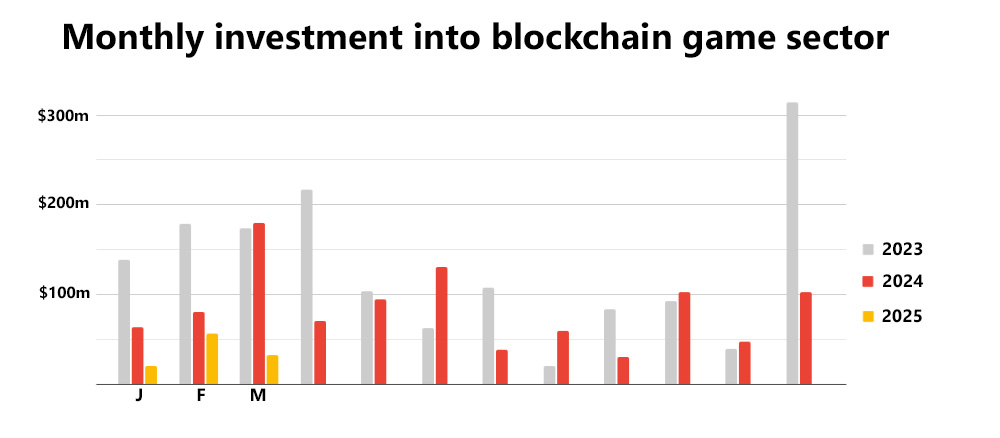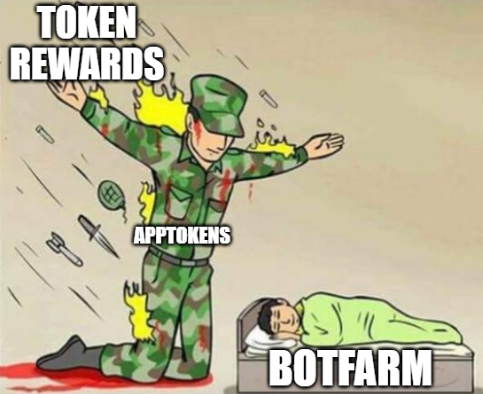Elevating web3 games beyond token hype

While the game industry at large continues to face turbulent times, web3 games are experiencing problems such as rising advertising costs and a lack of enthusiasm for new IP as well as a bunch of its own often self-made issues.
If the level of investment is an indicator of the state of the market, recent numbers from Q1 2025 provide a bleak outlook. Funding into web3 gaming was down 64% year-on-year.
At the current run rate, 2025’s total investment into the sector is estimated to be around $420 million, which compares to $1 billion in 2024 and $1.5 billion in 2023.

And much of the investment business so far has been token raises, which presents its own set of complexities the traditional game industry doesn’t have to deal with.
Game tokens have a larger impact than just adding a layer of confusion and legal uncertainties around investment. They are the backbone of web3 games’ entire ecosystems, the very thing that is supposed to power the games’ growth to eventual sustainability.
When game tokens suffer, as recently noted from their poor performance in 2024/25, the games themselves suffer too.
At least so far, this has been the inevitable correlation. But is there another way forward? It depends who you ask.
Pixels CEO Luke Barwikowski believes so. Determined to solve the problem of play-to-earn’s misaligned rewards systems, his team has been working on the PIXEL token’s ‘return on rewards’ ratio, with rewards now more directed towards players who are paying for a monthly VIP membership, with additional costs for cashing out your PIXEL tokens from the game.
Although showing signs of turning the tide on PIXEL’s downward value, these measures aren’t enough however, which is why Pixels recently announced it’ll be the first game adopting Limit Break’s ERC20C Apptokens.

This will see the creation of the vPIXEL token, which can only be spent in-game or staked. Backed 1:1 against the existing PIXEL token, players will also be able to withdraw vPIXEL without any fees to use it in partner games such as Pixel Dungeons and Forgotten Runiverse. This means the tokens remain within the Pixels ecosystem.
Despite some early resistance, it’s likely the introduction of Apptokens is the beginning of a major transformation of blockchain-enabled games, as more developers will start to see the benefit of programming and regulating the use of their game tokens. Sky Mavis co-founder Jeff Zirlin recently said he believes “the next breakthroughs around incentives will come via programmable app tokens.“
Until now, there’s not been any way for developers or actual players to control a token’s trajectory. Once it’s in the hands of centralised exchanges, speculators are in charge, causing pump and dump and eventually the extinction of sustainable web3 – and certainly play-to-earn – game economies. Limit Break CEO Gabe Leydon describes it as “centralized exchanges are at the top and traders are in the middle, while developers are at the bottom.”
Apptokens such as vPIXEL are onchain assets which, like any crypto tokens, can still increase in value as a game gains traction. One of the points is that their value is driven by actual usage rather than pre-launch speculation, hype, and post-launch dumps.
That can only be a good thing, and perhaps the only thing, saving the currently sinking ship that is web3 game tokens.

Comments are closed.